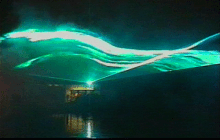
 |
|
S O L ![]() M
M
Signs of Life on Mars
|
|

Research Team |

Principal Objectives |

Facilities and equipment |
Contact address |
Jesús
Martínez-Frías (PI)
Alvaro
Giménez
Antonio
Formoso
Antonio Delgado
Huertas
J.A. Rodríguez-Losada
J.I.
Robla
J.J.
López Moreno
J.L.
García Fierro
Juan
F. Llamas Borrajo
Pedro
Vilarroig
Rafael
Rodrigo Montero
Ramón Capote
del Villar
Ricardo
Amils
Rosario Lunar Hernández
Salvador
Montero Martín
Sebastián
Vidal Pezzi
ESA announces an opportunity to propose investigations
in the field of exobiology to be implemented in a ESA flight proposal
for one of the upcoming NASA Mars Surveyor Program Missions that will aim
at in-situ investigations on the martian surface and sub-surface. ESA will
provide the basic structure including a drill
system consisting of a drill unit, a sample
distribution system and a sample preparation system. The proposed experiments
have to demonstrate in-situ investigation capability. New developments
are encouraged. The instruments will be part of a facility on a fixed platform.
The aim of the project is to discover, in the Martian regolith, mineralogical, geochemical and biochemical signatures which can be used as indicators of fossil and extant biological activity.
The proposal attempts to develop instrumentation capable of support the following studies:
a) establishing the mineral parageneses
and their relationships;
b) determination of the geochemical
features of the paragenetic setting, paying special attention to the distribution
patterns and ratios of selected elements;
c) assay the isotopic values and the
possible fractionation processes of stable isotopes, and
d) detection of basic geo-microbiological
signs universally found in selected Earth-like environments.
As indicated in the Announcement, the EMF will provide the infrastructure for the scientific instruments: a) mechanical structure to accommodate the scientific instruments; b) payload control sub-system (interface between the scientific instruments and the lander spacecraft); c) power supply sub-system; d) thermal control sub-system for the entire payload including the environmental control of specific instrument compartments; e) drill and sample distribution system; f) communication package/interface.
To perform the studies, the development of miniaturised instrumentation is proposed which includes, besides the integration of a specifically-designed microcamera that is able to work both in the visible and infrared spectra, the following equipment: 1) a laser-based system capable of vaporising the Martian regolith; 2) sensors for the analysis of gases (organic and inorganic compounds), coupled with a Neuro-Fuzzy system for data processing; 3) a permittivity probe to detect, and quantify, the possible presence of traces of water in the regolith, and 4) a compact Raman spectrometer (less than 10 kg in weight) to determine the mineralogical and geochemical characteristics.
Página diseñada y mantenida por Jesús Martínez-Frías, 1999